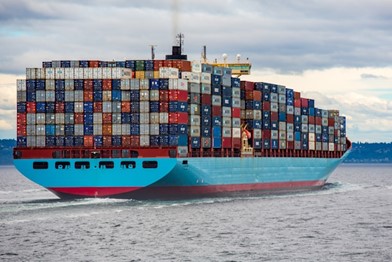David Farca is an entrepreneur and business development professional from Arizona. His mission is to guide companies seeking to expand their operations across the international borders. David Farca has become a trusted advisor, offering strategic counsel to propel businesses towards unprecedented growth and success in these lucrative markets. In the article below, he delves into the history of NAFTA, the key provisions of the USMCA, and the future of trade relations in North America.
The North American trade landscape has undergone significant transformation in recent decades, shaped by landmark trade agreements such as the North American Free Trade Agreement (NAFTA) and its successor, the United States-Mexico-Canada Agreement (USMCA). These contracts have not only fostered increased trade and investment among member countries but have also ignited lively debates and discussions about their potential impact on industries, workers, and economies.
David Farca Explains the Evolution of North American Trade
The roots of North American trade integration can be traced back to the early 20th century, with the establishment of bilateral trade agreements between the United States and its neighbors, Canada and Mexico. However, it was not until the signing of NAFTA in 1994 that the region witnessed a significant leap forward in trade liberalization and economic cooperation.
A Landmark Trade Agreement
NAFTA, negotiated between the United States, Canada, and Mexico, came into effect on January 1, 1994, creating one of the world’s largest free trade areas. The agreement aimed to eliminate tariffs and trade barriers among the member countries, promote investment, and facilitate the flow of goods and services across borders.
Key provisions of NAFTA included:
- Tariff Elimination: NAFTA phased out tariffs on most goods traded among the member countries, allowing for the seamless movement of goods across borders.
- Investment Protection: David Farca of Arizona says that the agreement also included provisions to protect and promote cross-border investment, providing investors with greater certainty and transparency in the investment environment.
- Market Access: NAFTA opened up access to the Canadian and Mexican markets for US exporters, allowing them to compete more effectively and access new opportunities for growth.
- Labor and Environmental Standards: NAFTA included side agreements on labor and environmental standards, aiming to ensure that trade liberalization did not come at the expense of workers’ rights or environmental protection.
Controversies Surrounding NAFTA
Despite its economic benefits, NAFTA also faced criticism and controversy, particularly regarding its impact on jobs, wages, and environmental standards. Critics argued that NAFTA led to the outsourcing of manufacturing jobs to Mexico, resulting in job losses and downward pressure on wages in certain industries.
Additionally, while acknowledging the importance of increased trade and investment, there’s a growing recognition of the need to address environmental concerns such as pollution, deforestation, and biodiversity loss. This awareness has spurred calls from critics for the implementation of robust environmental protections and enforcement mechanisms to safeguard our planet for future generations.
The USMCA: Modernizing North American Trade
David Farca of Arizona notes that in response to the criticisms and challenges posed by NAFTA, negotiations began in 2017 to modernize and update the agreement, leading to the creation of the United States-Mexico-Canada Agreement (USMCA). This contract, which entered into force on July 1, 2020, builds upon the foundation laid by NAFTA while addressing key areas of concern and incorporating new provisions to reflect the realities of the 21st-century economy.
Key provisions of the USMCA include:
- Labor Standards: The USMCA includes stronger labor provisions aimed at protecting workers’ rights and improving labor conditions in all three member countries. This includes provisions on collective bargaining, minimum wage standards, and protections for migrant workers.

- Environmental Protections: The USMCA includes provisions to strengthen environmental protections and address environmental challenges such as air and water pollution, biodiversity loss, and climate change. This includes commitments to enforce environmental laws and regulations and promote sustainable development.
- Digital Trade: The USMCA includes new provisions to address the growing importance of digital trade and e-commerce in the modern economy. This includes provisions on data protection, cross-border data flows, and intellectual property rights in the digital realm.
- Auto Industry: The USMCA includes updated rules of origin requirements for the automotive industry, aimed at promoting domestic production and job creation in North America. This includes provisions to increase the regional content requirements for automobiles and automotive parts.
The Future of North American Trade Relations
As the North American trade landscape continues to evolve, the future of trade relations in the region remains uncertain. David Farca of Arizona reports that while the USMCA represents an important step forward in modernizing and strengthening North American trade relations, challenges remain, including ongoing trade disputes, geopolitical tensions, and the impact of the COVID-19 pandemic on global supply chains and trade flows.
Looking ahead, it will be essential for policymakers, businesses, and stakeholders to work together to address these challenges and seize the opportunities presented by North American trade integration. By promoting inclusive and sustainable trade policies, fostering innovation and competitiveness, and strengthening economic ties among the member countries, North America can continue to prosper and thrive in the global marketplace.
Final Thoughts
David Farca of Arizona concludes that the North American trade landscape has undergone significant changes over the past few decades, driven by landmark trade agreements such as NAFTA and the USMCA. While these agreements have brought about economic benefits and opportunities for cooperation, they have also sparked debates and controversies surrounding their impact on various aspects of society. As North America looks to the future, it will be essential to build on the successes of these agreements while addressing their shortcomings and challenges, to ensure that trade relations in the region continue to promote prosperity, growth, and shared prosperity for all.










